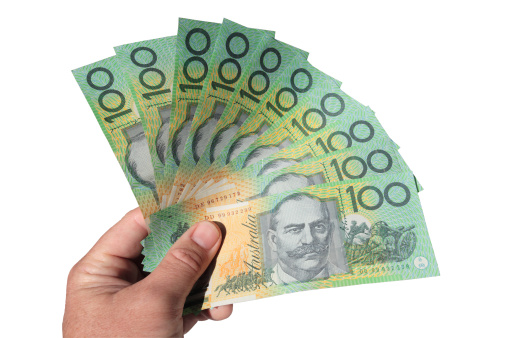Australian dollar rose after higher-than-expected consumer inflation was reported.
The Australian Dollar (AUD) recovered its daily losses after the higher than expected Monthly Consumer Price Index was issued on Wednesday. This good data may push the Reserve Bank of Australia (RBA) to contemplate another rate increase. The minutes from the RBA’s May policy meeting indicated that the central bank considered raising interest rates.
The Australian Dollar struggled during earlier Asian hours due to greater risk aversion, as shown by the stronger. US dollars (USD). The strength of the USD can be attributed to higher US Treasury yields. The US Dollar Index (DXY), which measures the USD against six major currencies, was trading higher around 104.70, with 2-year and 10-year US Treasury yields of 4.96% and 4.54%, respectively, at the time of posting.
US dollar gained as US Treasury yields rose.
The US dollar (USD) rose on Tuesday as Neel Kashkari. President of the Federal Reserve Bank of Minneapolis, hinted that a rate hike was still conceivable. Kashkari added. “I don’t think anybody has totally taken rate increases off the table.” And voiced concern about the disinflationary process, forecasting only two rate drops.
According to the CME FedWatch Tool, the likelihood that the Federal Reserve will undertake a 25 basis-point rate drop in September declined. It fell to 41.7% from 44.9% the day before. On Wednesday. New York Fed President John Williams is scheduled to speak, and the Fed’s Beige Book will be released. Which provides an overview of the current US economic situation based on interviews with key business contacts. Economists, market experts, and other sources from the 12 Federal Reserve Districts.
Daily Market Movers: Australian Dollar Appreciates Following Higher Consumer Inflation.
Speaking from Beijing, International Monetary Fund (IMF) Deputy Managing Director Gita Gopinath raised China’s 2024 economic growth target to 5% from 4.6%, citing a strong first quarter. Gopinath also lauded China’s efforts to strengthen its property market.
Australia’s Monthly Consumer Price Index climbed 3.6% year on year in April. Exceeding the predicted figure of 3.4% and The prior reading was 3.5%.
The US Housing Price Index (MoM) for March underperformed expectations, coming in at 0.1% versus 1.2% in February.
Australia’s retail sales (MoM) increased by 0.1% in April. Reversing a prior 0.4% fall. This growth rate fell short of market forecasts of 0.2%.
On Tuesday, China’s Politburo, the country’s top leadership, said. That fiscal, monetary, investment, consumption, industrial, regional, and other policies will be better coordinated and integrated with employment plans. Because of the close trading relationship between China and Australia. Any economic developments there could have a substantial impact on the Australian economy.
At the 2024 BOJ-IMES Conference on Tuesday, Cleveland Federal Reserve President Loretta Mester stressed the importance of FOMC remarks to Provide a clear analysis of the present economic assessment, its implications for the prognosis, and the associated risks. Mester expects the Fed to explore strengthening its communications as part of the forthcoming monetary policy framework review.
Meanwhile, Federal Reserve (Fed) Governor Michelle Bowman emphasized the necessity of continuing to lower the size of the balance sheet in order to obtain adequate reserves as soon as feasible, particularly while the economy is robust. Bowman emphasized the importance of properly expressing that changes in the run-off rate do not represent a movement in the Fed’s monetary policy position.









